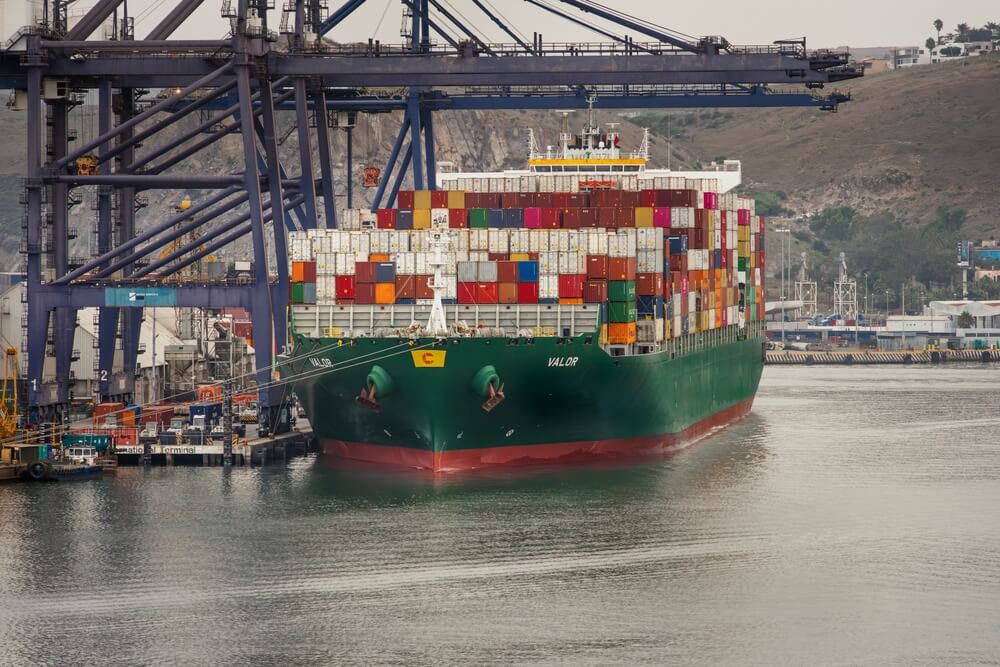Nearshoring in Mexico can minimize supply chain disruptions, reduce transportation costs, and take advantage of favorable trade agreements. Companies benefit from lower labor costs and easier communication due to geographical proximity.
Key Takeaways
- Nearshoring in Mexico offers significant benefits for businesses, including reduced transportation costs, tax incentives, a skilled workforce, and a strategic location with modern logistics infrastructure.
- Navigating Mexico’s legal landscape poses challenges, requiring expertise in corporate structures, labor laws, and regulatory compliance, with particular emphasis on minimizing risks associated with crime and corruption.
- The nearshoring boom in Mexico is driving economic growth, boosting exports, attracting substantial foreign investments, and enhancing global supply chains, necessitating a balance between growth and environmental sustainability.
The Rise of Nearshoring in Mexico
Nearshoring has surged in popularity as companies look to delegate a portion of their production to nearby countries, minimizing the disruptions that come with longer supply chains. Mexico has become a prime beneficiary of this trend, largely due to its proximity to the United States and its strong commercial ties with its northern neighbor.
The nearshoring boom has been propelled by a need to:
- Reduce supply chain disruptions
- Minimize transportation costs
- Improve communication and collaboration
- Increase flexibility and responsiveness to market changes
These factors have become all too common in today’s volatile global market.
The economic rivalry between U.S. and China has expedited the shift towards Mexico. As U.S. policies start to favor regional supply chains more prominently, Mexico emerges as a strategic ally. This shift has had a significant impact on Mexico’s economy, creating a ripple effect across diverse industries from manufacturing to services.
Cities like Nuevo León have seen substantial growth, becoming hubs of economic activity and innovation. The Banco de Mexico has been keenly observing these trends, highlighting the positive economic impacts of nearshoring.
Key Opportunities for Foreign Companies
Foreign firms are finding a treasure trove of opportunities in nearshoring to Mexico. The benefits are manifold, including:
- Reduced transportation costs and time due to geographical proximity to major markets
- Attractive tax incentives
- Free trade agreements
- Recent government initiatives promoting nearshoring through various fiscal measures
The subsequent sections offer a deeper exploration of these opportunities, beginning with the transformative impact of Mexico’s numerous trade agreements on foreign firms, particularly in the context of international trade.
Leveraging Free Trade Agreements
Mexico’s extensive network of trade agreements, supported by the Mexican Association, is a significant draw for foreign firms. With over 50 trade agreements in place, Mexico offers preferential access to a wide range of international markets. One such trade agreement, the United States-Mexico-Canada Agreement (USMCA), is particularly beneficial, allowing almost all trade transactions between these countries to be duty-free.
This agreement also provides streamlined customs procedures and robust intellectual property protection, making Mexico an attractive nearshoring destination for businesses looking to optimize their operations.

Skilled Workforce and Competitive Labor Costs
A key advantage of Mexico is the combination of a skilled workforce and competitive labor costs. The country boasts a young, growing population that is technically skilled, providing a cost-competitive labor force that is highly attractive to foreign firms. Despite recent increases in minimum wage levels, Mexico’s labor costs remain substantially lower than in the United States, Western Europe, and even China, offering significant savings for labor-intensive industries.
This combination of a skilled workforce and lower labor costs makes Mexico an ideal destination for nearshoring across various sectors. Areas concentrated in advanced industry-specific technology benefit from this skilled labor force, further enhancing the country’s appeal.
The nearshoring boom in Mexico is therefore not just about cost savings but also about tapping into a pool of talent that can drive innovation and efficiency.
Strategic Location and Infrastructure
Mexico’s strategic location is another compelling reason for foreign firms to consider nearshoring. Its geographical proximity to the United States translates to shorter lead times and reduced transportation costs, making it a prime candidate for nearshoring. Additionally, Mexico serves as a natural bridge between North America and South America, enhancing its appeal as a logistical hub.
The country boasts modern transportation and logistics networks, including:
- Highways
- Railways
- Ports
- Airports
These support efficient business operations. Significant improvements have also been made in internet and telecommunications infrastructure, further bolstering Mexico’s nearshoring capabilities.
First-class industrial real estate, predominantly international-standard Class A warehouses in secure industrial parks, adds another layer of attractiveness for businesses looking to set up operations in Mexico.
Legal Challenges and Considerations
While the opportunities are plentiful, the Mexican legal landscape presents its own set of legal challenges involved in nearshoring projects. The complexities of navigating various legal frameworks, ensuring regulatory compliance, and managing risks require a collaborative effort among legal practitioners in different practice areas.
The ensuing subsections provide a detailed examination of these challenges, commencing with the complexities of maneuvering through Mexican legal frameworks.
Navigating Mexican Legal Frameworks
Foreign companies often find themselves navigating a labyrinth of legal requirements when establishing operations in Mexico. Understanding the various types of corporate entities available and selecting the correct corporate structure are vital steps where corporate legal advice becomes essential. Additionally, comprehending local labor laws and regulations is crucial for maintaining compliance and ensuring a positive market reputation. Key aspects of Mexican labor law include:
- Social Security rules
- Profit-sharing
- Employee benefits
- Issues with unions
Mexico’s free zones along its northern and southern borders offer reduced VAT and income tax, presenting additional legal considerations and opportunities for businesses. However, proposed reforms could introduce legal uncertainty, affecting long-term planning and investment decisions. This makes the role of law firms even more critical in guiding businesses through these complexities.
Addressing Regulatory Compliance
Ensuring regulatory compliance is a cornerstone of successful nearshoring operations. Mexico’s Manufacturing, Maquila, and Export Services Industry Program (IMMEX) allows foreign manufacturers to import raw materials and components tax and duty-free under specific conditions, streamlining operations. Understanding the intricacies of the United States-Mexico-Canada Agreement (USMCA) is also vital for businesses, as it ensures efficient operational processes and reduced costs.
Collaborating with integrators can further streamline logistics and ensure compliance with industry regulations, enhancing the success of nearshoring projects. This collaboration is particularly important for foreign direct investment (FDI), as regulatory compliance directly impacts the success and viability of nearshoring operations. Mexico’s proximity to the United States and its role as a transit platform to Latin America make it a prime candidate for FDI in the nearshoring context.
Economic Impact and Growth Potential
The nearshoring boom has the potential to significantly boost Mexico’s economy in several ways:
- It can increase Mexico’s GDP
- It can boost exports
- It can attract foreign investments
- It can lead to substantial economic growth
For example, foreign direct investment in Mexico’s supply chains increased by 47% in the first three quarters of 2023 compared to 2022.
The subsequent subsections will examine different facets of this economic impact, beginning with the enhancement of Mexican exports.
Boost to Mexican Exports
Nearshoring has the potential to significantly boost Mexican exports by improving capital investment from U.S. firms and reducing supply chain disruptions. With the strategic positioning of Mexico as a partner for businesses seeking to minimize delays and streamline operations, Mexican manufacturing exports to the U.S. could increase from $455 billion to an estimated $609 billion over the next five years.
Attracting New Investments
The nearshoring trend has led to a surge in foreign investments, with Mexico experiencing its highest level of foreign investment in 18 years, reaching around $36 billion in 2023. Key states like Mexico City, Aguascalientes, and Nuevo León have become hotspots for economic development, attracting significant foreign investments. Companies such as Tesla, Unilever, and Hewlett Packard have made substantial investments, further solidifying Mexico’s position as a nearshoring destination.
This influx of investment is not just limited to traditional sectors. There has been a 976% increase in funding for the Global Economic Intelligence Unit in Mexico, showcasing the country’s commitment to attracting investment and economic growth. Nearshoring has also led to increased job creation in various sectors, with seven out of ten Mexican executives expanding their investments in the country.
Enhancing Mexico’s Global Supply Chains
Nearshoring enhances Mexico’s global supply chain by providing a robust and reliable production base closer to North American markets. Leveraging its existing manufacturing linkages and trade arrangements with the U.S., Mexico’s deep industrial ecosystem, built over decades of integration with U.S. manufacturing chains, presents a strong advantage for nearshoring.
As the United States’ largest trade partner, Mexico provides significant advantages for manufacturers looking to optimize their supply chains.
Environmental Considerations and Sustainability
Balancing nearshoring growth with environmental sustainability is a critical challenge for Mexico. The country aims to have 35% of its electricity come from clean energy sources by 2024, including renewable and non-renewable sources like nuclear and efficient cogeneration.
However, policy changes in recent years have altered the dynamics of the electricity market for private sector participants, affecting confidence in future investments.
Despite these challenges, Mexico has significant renewable energy potential, including solar photovoltaics and wind, which could meet its electricity needs many times over. The emphasis on fossil fuel generation, such as natural gas, over renewable energy further deviates Mexico from achieving its climate goals, such as reducing greenhouse gas emissions by 35% below business-as-usual levels by 2030.
To capitalize on the nearshoring boom sustainably, Mexico must focus on developing its renewable energy projects. The U.S. Commercial Service Mexico has noted increasing interest from both Mexican companies seeking U.S. renewable energy technologies and U.S. firms looking to expand operations in the country.
Sector-Specific Insights
Sector-specific insights reveal that nearshoring is driving growth in Mexico’s manufacturing, energy, and services sectors. Cities like Guadalajara, known as the ‘Mexican Silicon Valley,’ have emerged as key tech hubs for nearshoring activities.
The ensuing subsections will investigate the specific trends and opportunities in these sectors, starting with trends in manufacturing production.
Manufacturing Production Trends
Mexico’s manufacturing sector has seen substantial expansion, particularly in industries such as:
- Aerospace
- Automotive
- Electronics
- Medical devices
The automotive and aerospace industries continue to be pillars of Mexico’s manufacturing sector, attracting significant foreign investments. Cities like Guadalajara, Monterrey, and Mexico City have become technology hubs, drawing both startups and established tech companies. This growth is further supported by the integration of automation and robotics, which enhances efficiency and competitiveness.
There is also a growing emphasis on sustainability, with companies increasingly adopting green manufacturing practices. Investments in research and development are on the rise, fostering innovation and improving product offerings.
Furthermore, Mexico is making strides in electric vehicle manufacturing and green technologies, driven by government incentives and infrastructure investments. However, sustaining this momentum requires a skilled workforce, which the industry still lacks.
Energy Sector Opportunities
The energy sector in Mexico presents numerous opportunities, particularly in the context of nearshoring. Some key opportunities include:
- Developing a reliable and renewable power supply
- Investing in renewable energy projects
- Expanding the transmission and distribution infrastructure
- Promoting energy efficiency and conservation measures
Achieving a reliable and renewable power supply is crucial for Mexico to fully capitalize on nearshoring opportunities.
The country’s installed electricity capacity stands at 87,130 MW, with 31% coming from clean energy sources, partly due to regulatory changes classifying some steam production as clean energy. This highlights the importance of continuing to develop renewable energy projects to support the growing industrial demand.

Services Sector Potential
Mexico is also a top destination for nearshore IT outsourcing and BPO services, offering significant cost savings and a skilled workforce. The country has positioned itself as a leading ITO destination, thanks to its proximity to the U.S. and robust IT infrastructure.
This geographical advantage makes Mexico an appealing and practical nearshore outsourcing destination, providing services such as data entry, hosting, and managing business information. In this competitive market, Mexico stands out due to its strategic location and skilled workforce.
Future Outlook and Strategic Recommendations
As nearshoring continues to gain traction, businesses need to prepare strategically for future growth. This includes:
- Adapting to political transitions
- Embracing technological advancements
- Building strong partnerships
- Staying agile in response to changing US-Mexico relations.
The subsequent subsections will offer comprehensive strategic advice to effectively handle these aspects.
Preparing for Continued Growth
Strategic planning is essential for businesses to leverage fiscal incentives and prepare for continued growth. Companies should identify specific roles or teams to nearshore, thereby maximizing productivity.
Developing a robust process to verify the skills and competency of remote workers from Mexico is also crucial for ensuring quality and efficiency.
Embracing Technological Advancements
Technological advancements are reshaping the landscape of nearshoring. Businesses must stay abreast of global trends and adopt technologies such as artificial intelligence (AI), big data, and blockchain to optimize their operations.
AI, in particular, can enhance energy management, intelligent networks, and demand response, making operations more efficient.
Building Strong Partnerships
Building strong partnerships with local entities is vital for the success of nearshoring projects. Forming relationships with local partners who have a proven track record of successful projects can provide a strategic advantage.
These partnerships help businesses navigate local challenges and leverage local expertise to optimize their operations.
Adapting to Changing US-Mexico Relations
The political landscape between the U.S. and Mexico is dynamic, and businesses must stay vigilant to potential changes in trade policies and regulatory frameworks. Developing contingency plans for possible changes in USMCA implementation or renegotiation is critical for maintaining operational stability. The automotive industry, deeply integrated across North America, exemplifies the importance of these trade relationships.
Mexico has benefited from increased foreign direct investment as companies reduce their exposure to China and take advantage of U.S. policies like the Inflation Reduction Act and the Chips and Science Act. Diversifying supply chains within Mexico can help mitigate risks associated with geopolitical shifts. Mexico’s trade and investment ties with Canada and the United States are vital for its economic growth, making it essential to adapt to changing relations.
Summary
Nearshoring in Mexico offers a wealth of opportunities for foreign companies, from leveraging trade agreements and a skilled workforce to benefiting from strategic location and infrastructure. However, navigating the legal landscape, ensuring regulatory compliance, and managing risks are crucial for success. The economic impact of nearshoring is profound, with significant boosts to GDP, exports, and foreign investments.
As businesses look to the future, strategic planning, technological adoption, strong partnerships, and adaptability to changing political landscapes will be key to capitalizing on the nearshoring boom. Embrace these insights and position your business for success in the dynamic landscape of nearshoring in Mexico.
Frequently Asked Questions
What is nearshoring and why is it gaining popularity in Mexico?
Nearshoring, which involves delegating production to nearby countries, is gaining popularity in Mexico because of its proximity to the U.S., competitive labor costs, and extensive trade agreements. This makes it an attractive option for minimizing supply chain disruptions.
What are the key opportunities for foreign companies nearshoring in Mexico?
Foreign companies nearshoring in Mexico can benefit from reduced transportation costs, tax incentives, access to a skilled workforce, and a strategic location and infrastructure, providing a strong business case for investment in the country.
What legal challenges do companies face when nearshoring to Mexico?
When nearshoring to Mexico, companies face legal challenges such as complex legal frameworks, regulatory compliance, and managing risks related to crime and corruption. Seeking legal advice is essential to address these challenges effectively.
How does nearshoring impact Mexico’s economy?
Nearshoring positively impacts Mexico’s economy by boosting GDP, increasing exports, and attracting foreign investments, resulting in economic growth and job creation.
What are the environmental considerations for nearshoring in Mexico?
When considering nearshoring in Mexico, it’s important to address environmental sustainability challenges, such as the significant renewable energy potential in the country being impacted by policy changes and a focus on fossil fuels. This presents a complex situation for achieving climate goals.
Optimize Your Nearshoring Strategy in Mexico
Nearshoring in Mexico offers significant opportunities for businesses looking to streamline their supply chains and reduce costs. With its strategic location, skilled workforce, and favorable trade agreements, Mexico has become a prime destination for companies seeking to optimize their manufacturing and sourcing operations. Gembah can help you navigate the complexities of nearshoring in Mexico and capitalize on its potential.
Our team of experts will work closely with you to develop a tailored nearshoring strategy, navigate the legal and regulatory landscape, identify and vet potential manufacturing partners, and optimize your supply chain.
Whether you’re in manufacturing, technology, or services, Gembah has the expertise to guide you through the nearshoring process in Mexico, helping you balance opportunities and challenges to position your business for long-term success in the global market.



